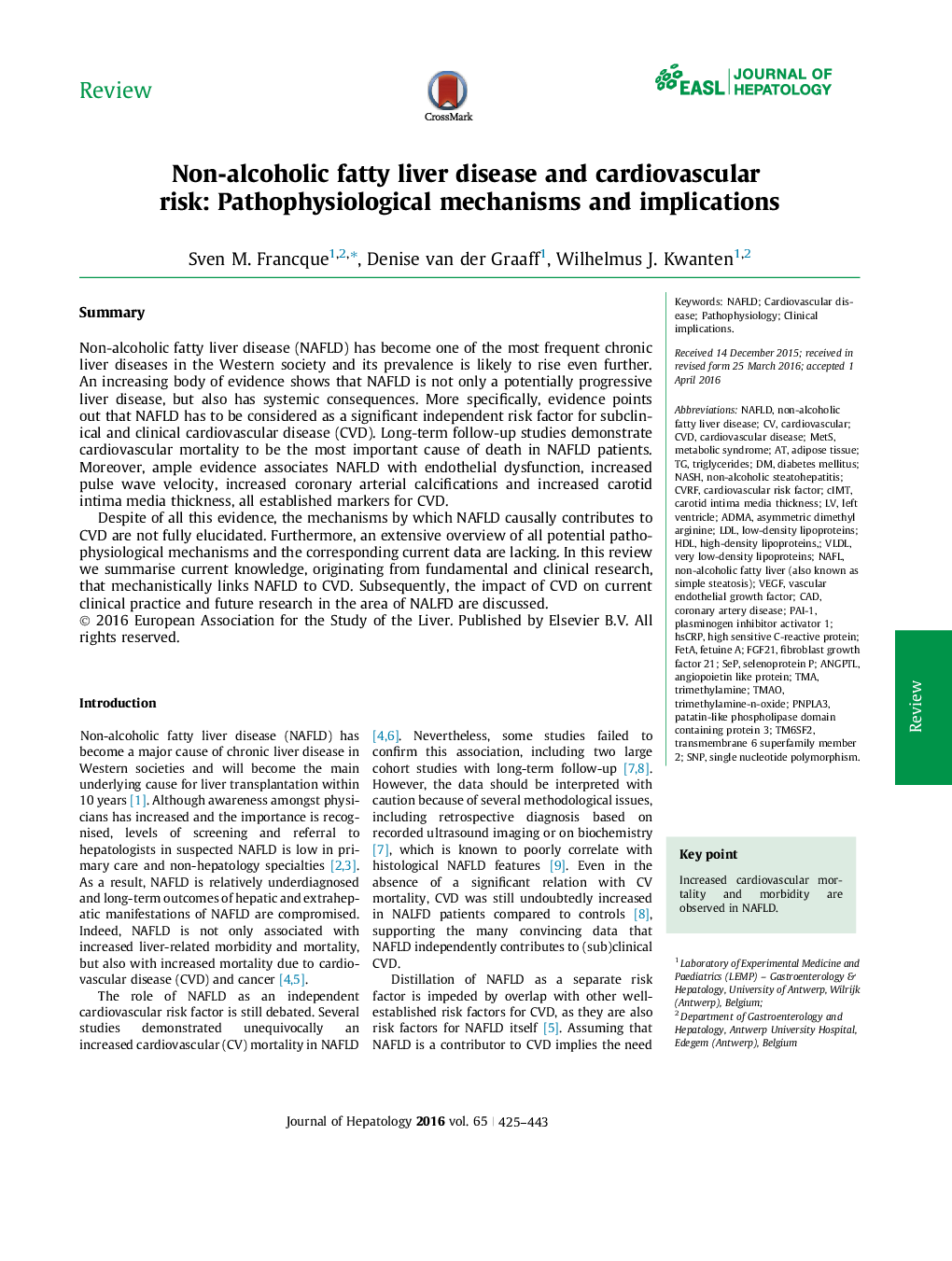| Article ID | Journal | Published Year | Pages | File Type |
|---|---|---|---|---|
| 3313581 | Journal of Hepatology | 2016 | 19 Pages |
SummaryNon-alcoholic fatty liver disease (NAFLD) has become one of the most frequent chronic liver diseases in the Western society and its prevalence is likely to rise even further. An increasing body of evidence shows that NAFLD is not only a potentially progressive liver disease, but also has systemic consequences. More specifically, evidence points out that NAFLD has to be considered as a significant independent risk factor for subclinical and clinical cardiovascular disease (CVD). Long-term follow-up studies demonstrate cardiovascular mortality to be the most important cause of death in NAFLD patients. Moreover, ample evidence associates NAFLD with endothelial dysfunction, increased pulse wave velocity, increased coronary arterial calcifications and increased carotid intima media thickness, all established markers for CVD.Despite of all this evidence, the mechanisms by which NAFLD causally contributes to CVD are not fully elucidated. Furthermore, an extensive overview of all potential pathophysiological mechanisms and the corresponding current data are lacking. In this review we summarise current knowledge, originating from fundamental and clinical research, that mechanistically links NAFLD to CVD. Subsequently, the impact of CVD on current clinical practice and future research in the area of NALFD are discussed.
